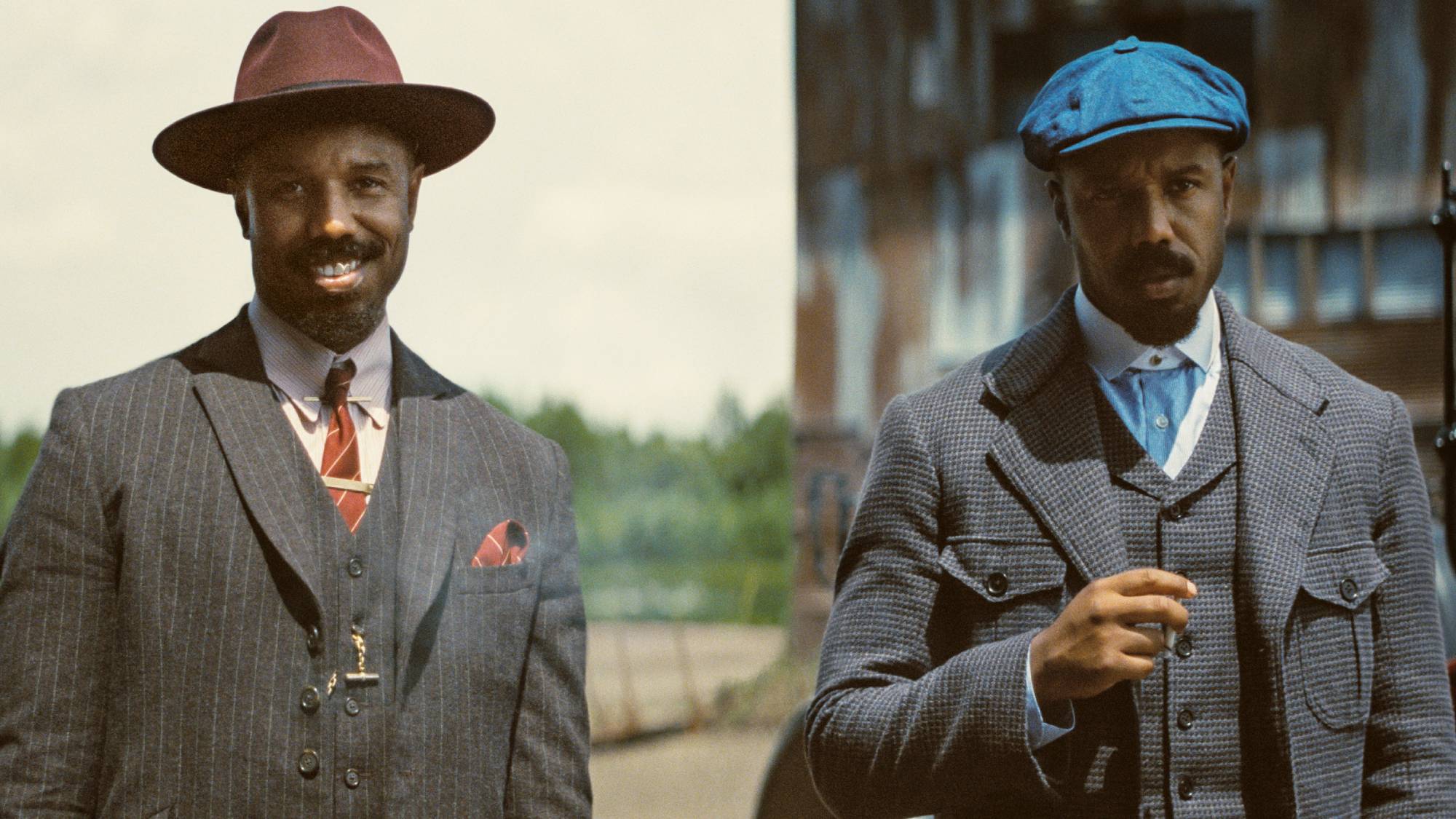Tom's Guide Verdict
This package — which gives you a drone, a controller, a camera and FPV goggles for less than $180 — is a near-steal.
Pros
- +
Easy to fly
- +
Comfortable controller
- +
Good price for package
Cons
- -
Occasionally glitchy connection
Why you can trust Tom's Guide
In my mini-drone "hangar," I have a Millennium Falcon and a TIE fighter, but I'm thinking of adding a Parrot. The company's newest kit, the Mambo FPV, is a great deal for those looking to learn the basics of drone racing. Included for $149 in this kit is the easy-to-fly Mambo minidrone, a detachable 720p camera, the Flypad controller and a pair of first-person viewer (FPV) goggles. While the Mambo's battery life is predictably short for a drone this size, it's the best drone for teaching kids how to fly.
Mambo Drone: Light and sturdy
The Mambo drone itself is small and light, measuring just 7.1 x 7.1 inches in size (and about 2 inches tall with the camera) with its propeller guards and weighing just 2.2 ounces. It has a standard drone shape: a central body with four rotors extending out from each corner. Two LEDs in the front not only change color to let you know the drone's status, but also give it a bug-eye appearance.
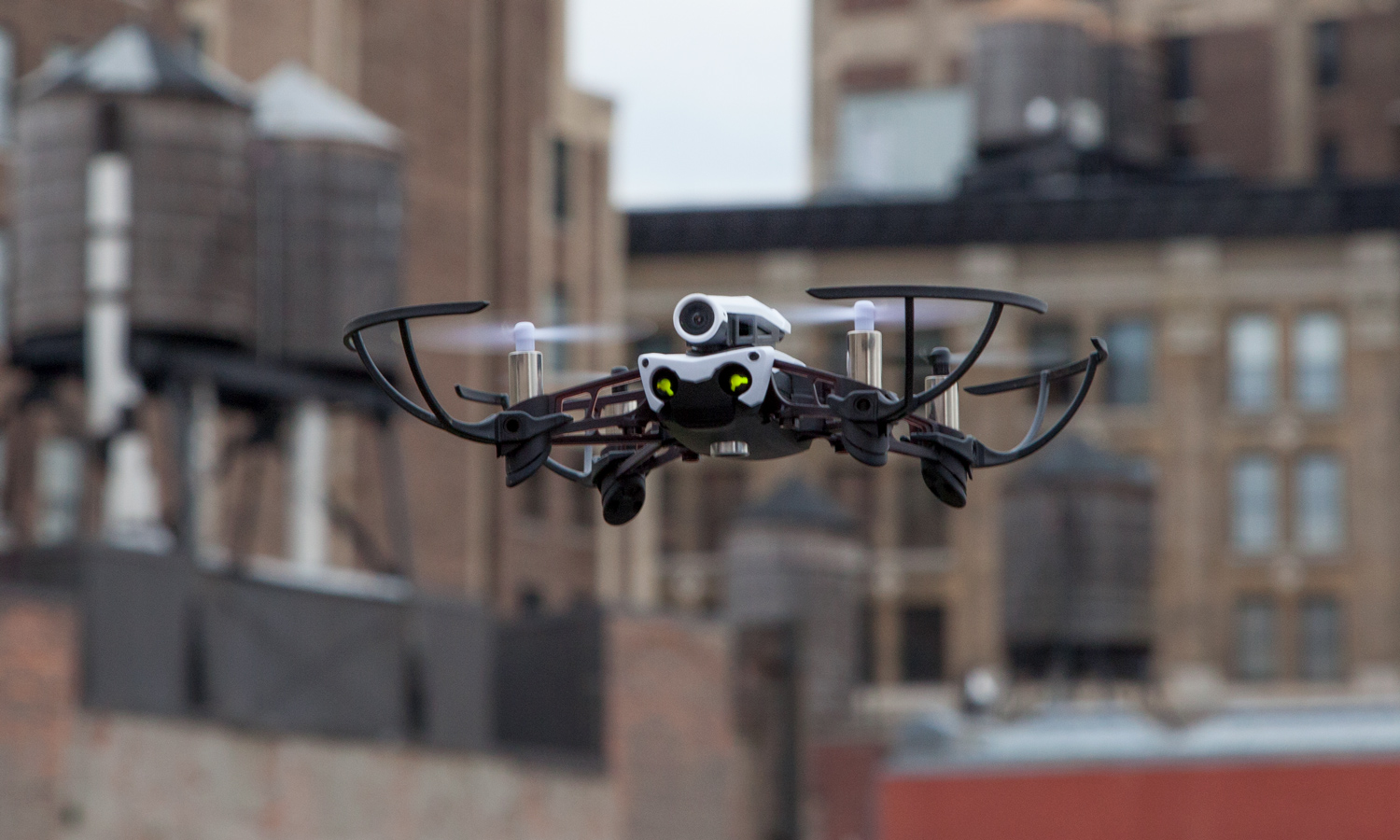
On the top of the Mambo are six Lego-like studs, which can be used to attach the included camera or other accessories: a pincer-like device called the Grabber ($19.89) or the Cannon, which shoots small, green plastic balls slightly larger than BBs. (The Cannon comes only with the Mambo Mission package ($159), which also includes the Grabber and the Flypad.)
MORE: The Best Drones and Quadcopters on Any Budget
Goggles
The goggles are fairly basic, but they get the job done. They're also comfortable to wear. A rubber skirt wraps around your eyes, and elastic straps ensure a snug fit.
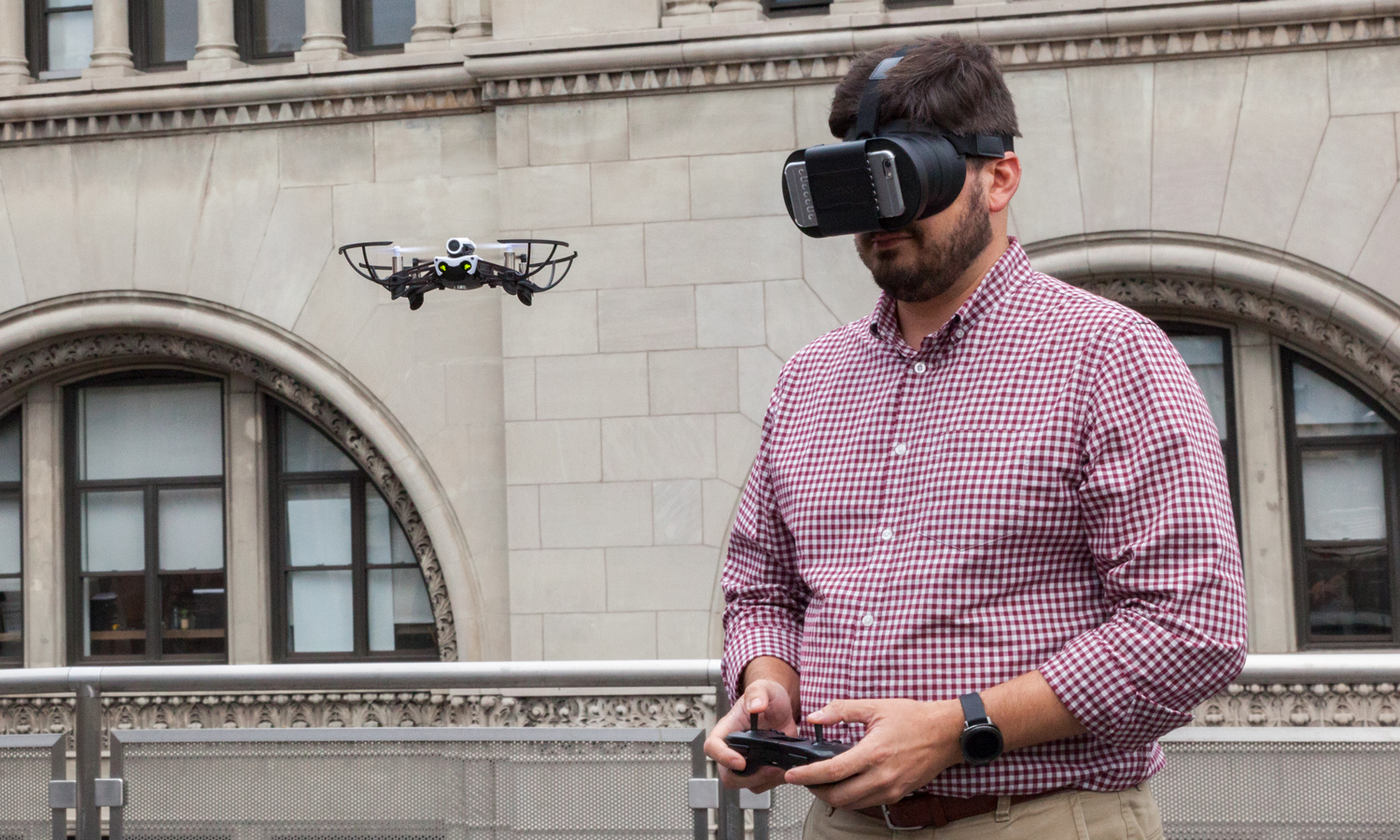
The goggles will fit most smartphones. A plastic strap holds the phone in place, and foam padding helps ensure the phone won't slide around.
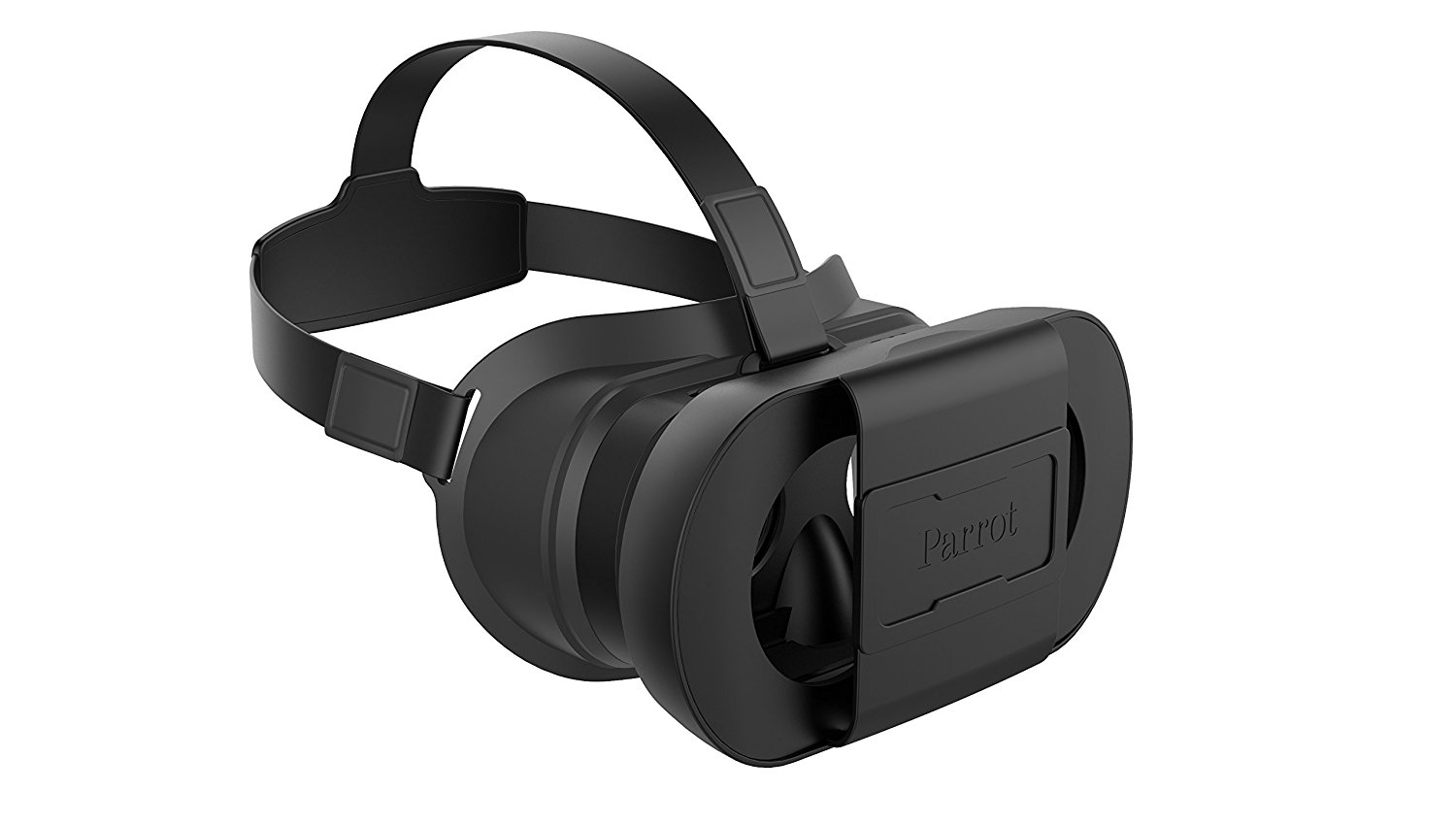
However, you'll most likely have to fiddle with the phone's placement. I found that if the device wasn't perfectly centered, the first-person view didn't align properly. You can use two little sliders to change the focus for each eye so that the image is properly aligned.
MORE: Drone Buying Guide: Everything You Need to Know
Flypad Controller
The Xbox-like controller, called the Flypad, has two joysticks, and between them is a takeoff-and-land button.
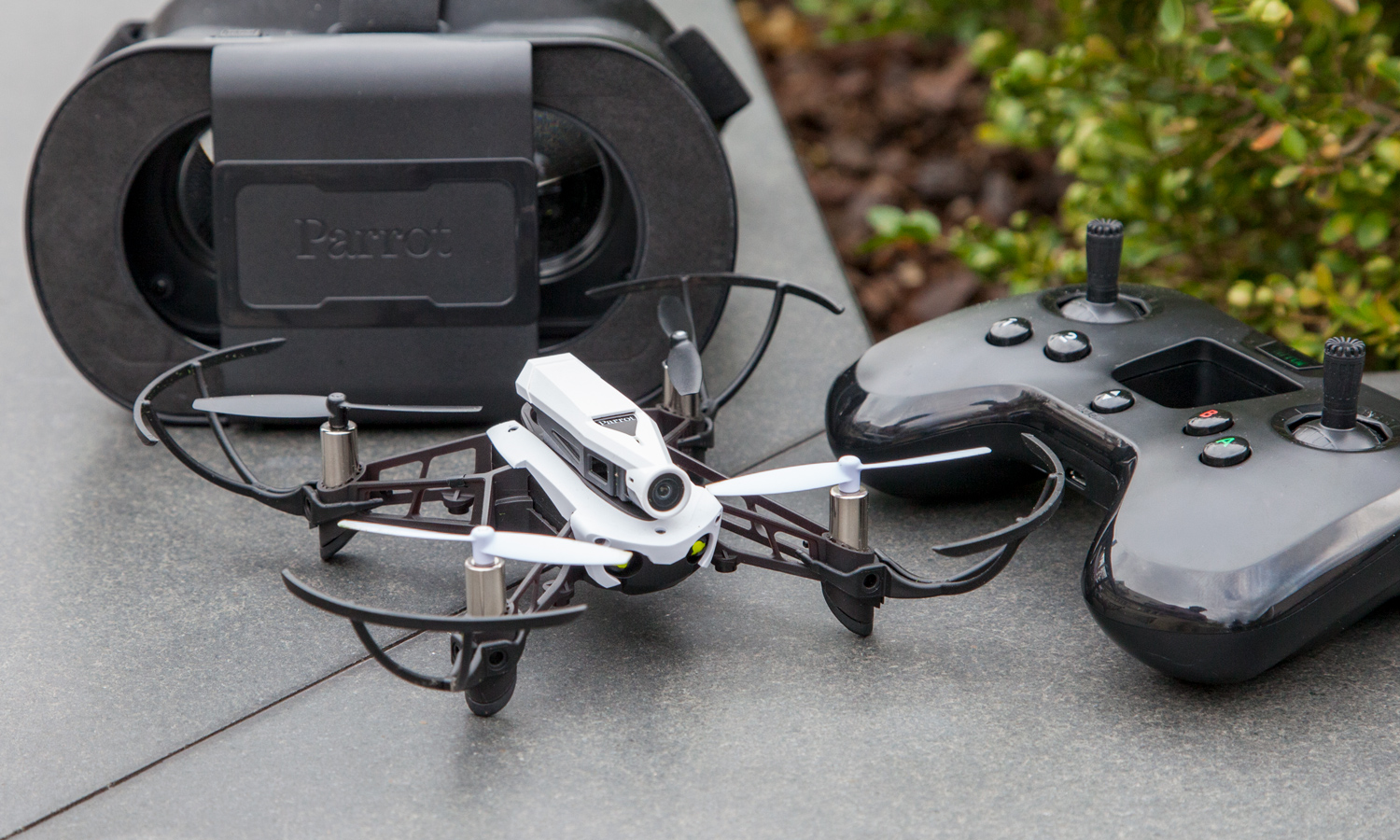
Below each stick are two more buttons, and the controller also has four shoulder buttons, all of which are used for various commands, such as flips and activating the camera. On its own, the controller costs $39.
Performance
Whether I was using the Flypad or the on-screen controls, the Mambo was a delight to pilot. It's a very stable drone, requiring no input to remain level. Within seconds, I was zipping it around a field, chasing squirrels who happened to get in my way.
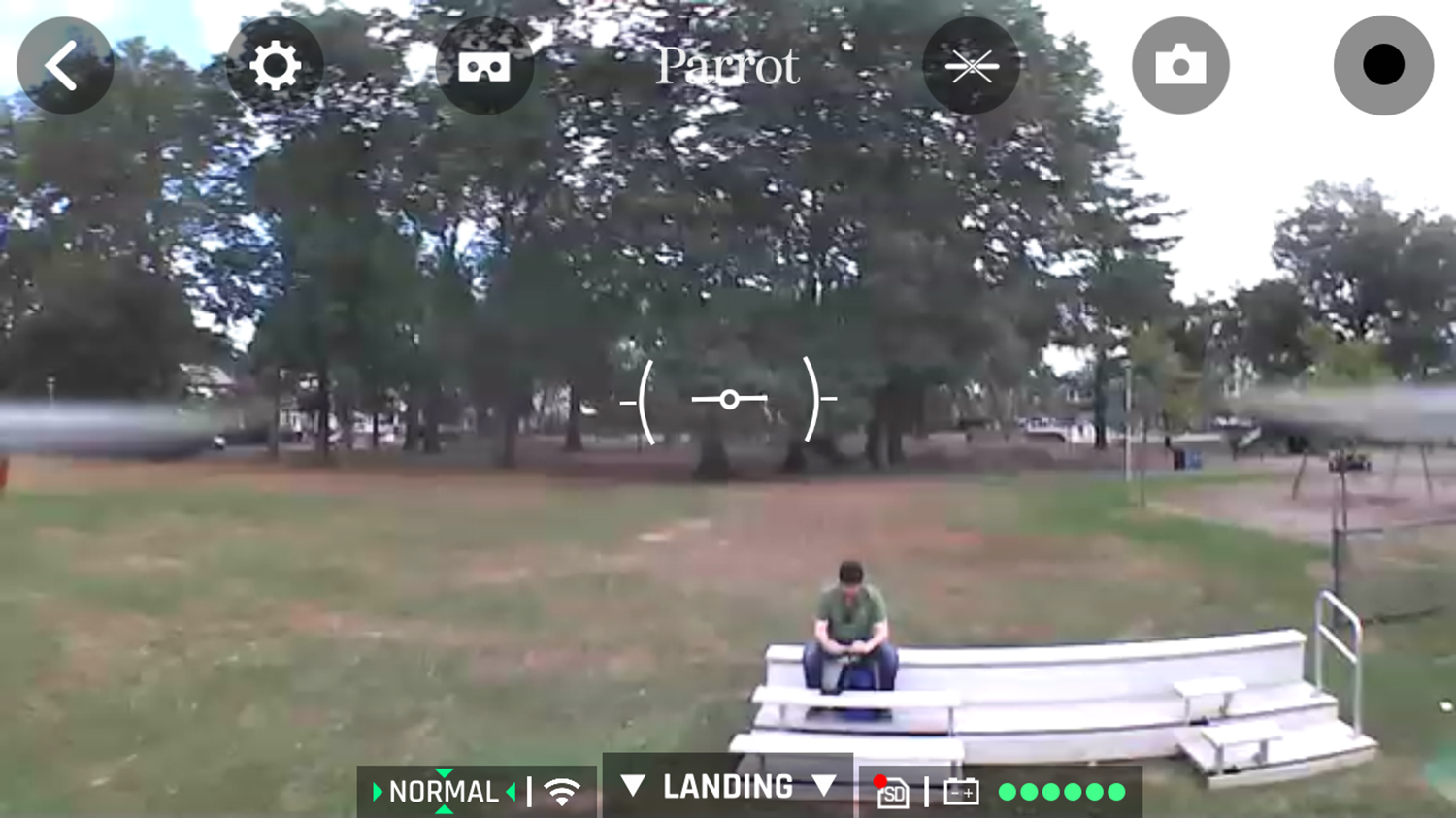
The view from the FPV goggles was good for the price, but don't expect crystal-clear quality. Everything is a bit pixelated, and the resolution degrades the farther the drone gets from you. I found that its effective range was around 400 feet; beyond that, the video feed became so choppy that it was impossible to see where I was going
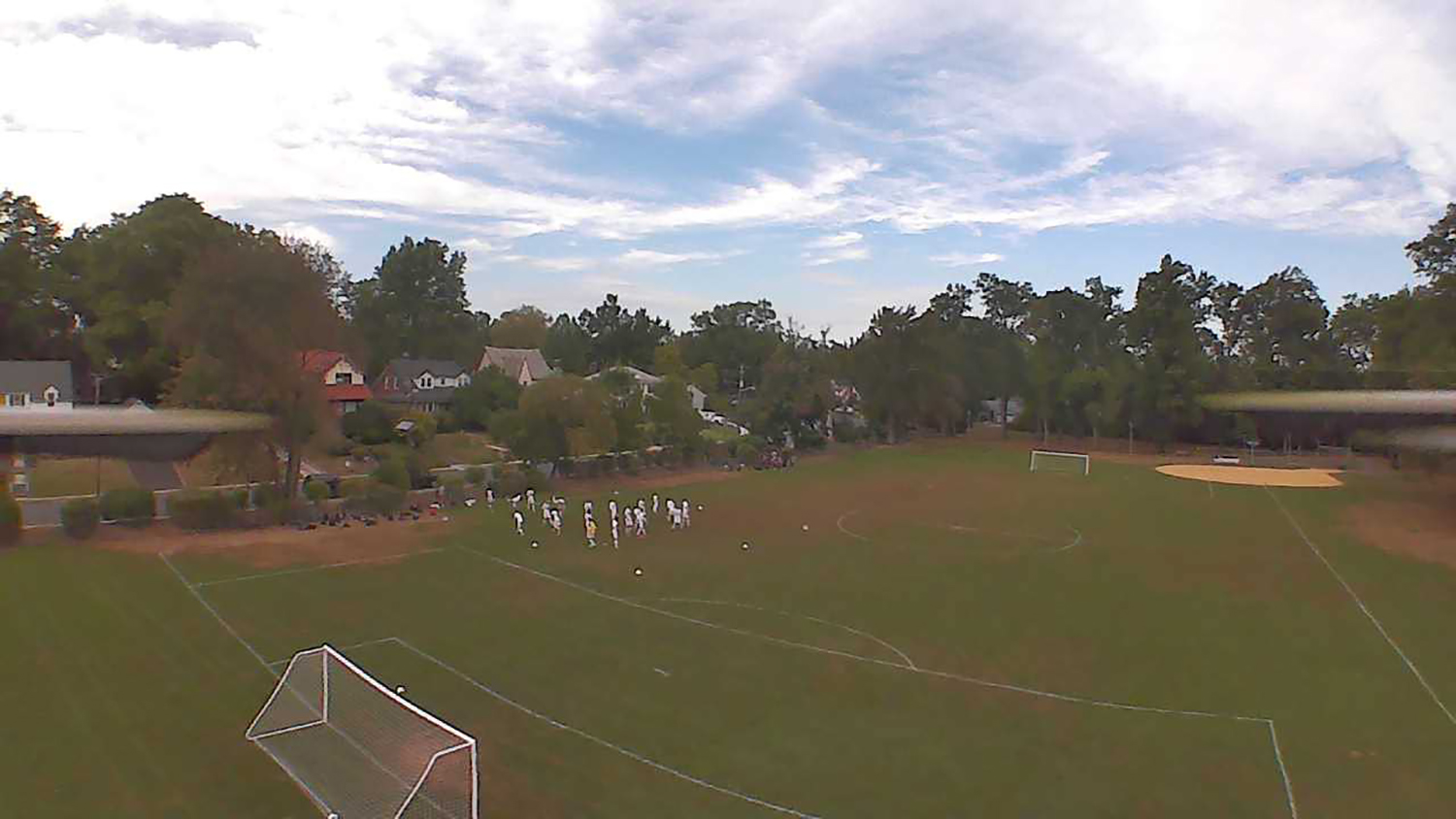
On several occasions, I had trouble maintaining a connection between my phone and the drone. Even though I was in the middle of a park with few Wi-Fi signals around, I would launch the drone and it would hover in midair, only to lose its connection. I had to gingerly grab the drone and tilt it to one side to get it to stop.
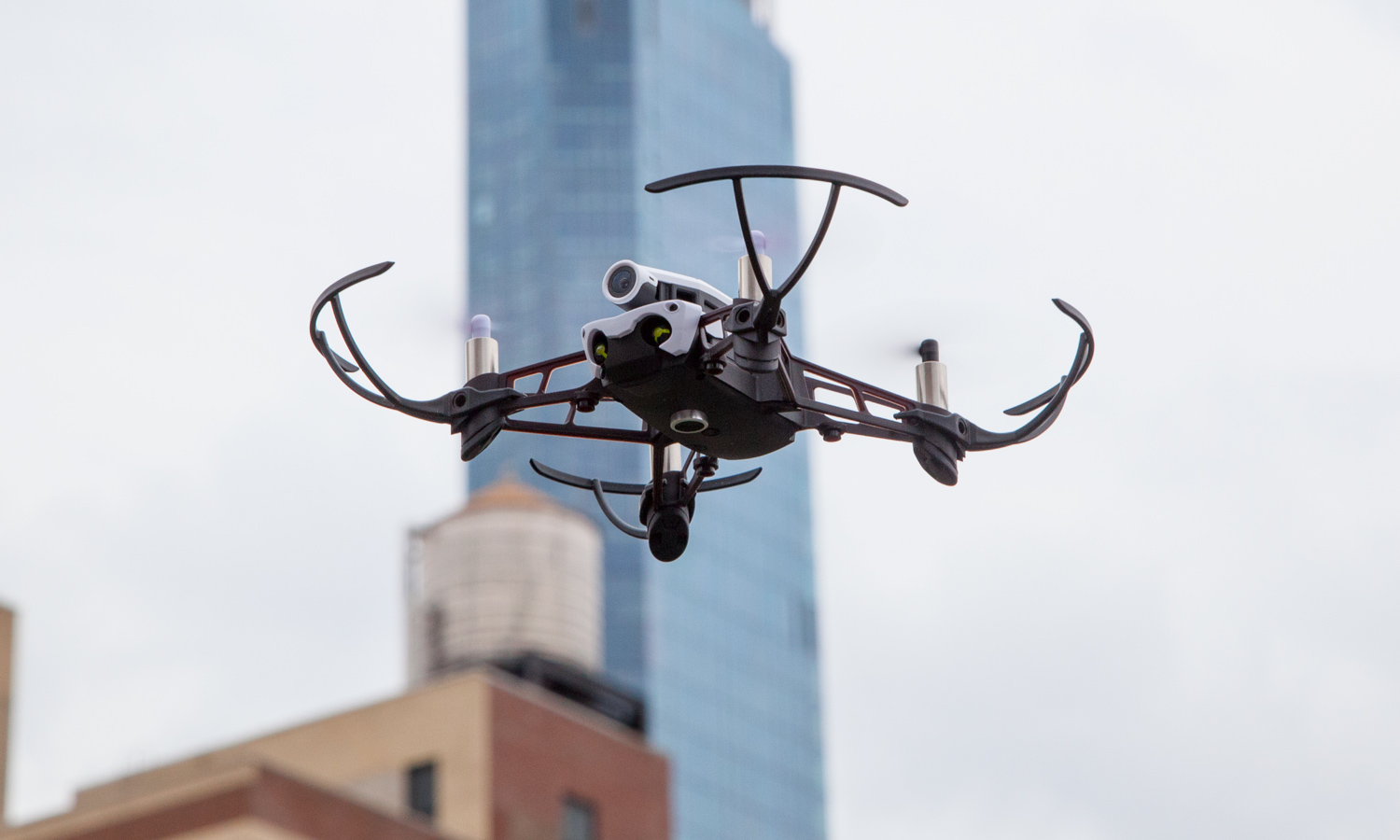
Still, most flights were without incident, and I was able to fly the craft around with ease. You'll want a relatively calm day, though; the light weight of the drone makes it very susceptible to gusts of wind. This not only makes piloting the drone more difficult, but also significantly shortens the battery life as the Mambo tries to keep its position.
MORE: What the FAA's Drone Rules Could Mean for You
Image Quality
Don't expect DJI-level photos and video from the Mambo, but what its 720p camera could produce was good for the price. It's nothing you're going to print out, but worthy enough for a Facebook post and to get a feel for what drone photography is all about.
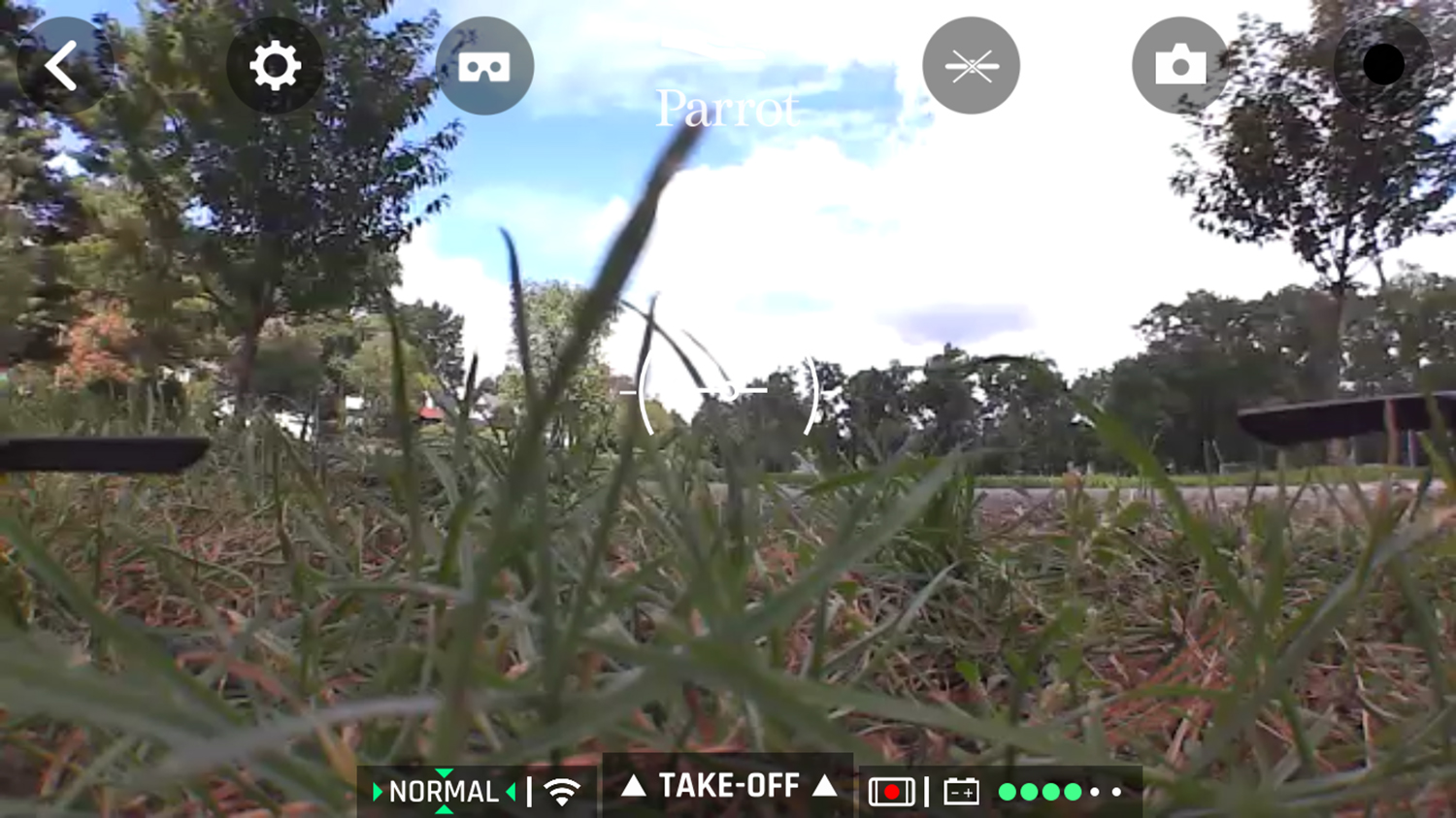
One thing you'll have to get used to is that part of the Mambo's forward rotors will appear in every photo and video you take. They're not overly obtrusive, but they're present.
Colors in images varied wildly, as the drone tried to compensate for various lighting conditions. In one shot, for example, everything had a bluish cast, while other shots hewed warmer. Nothing was well-defined, but I could make out the white accents on the tail of a squirrel I chased around the park, as well as the white uniforms of a soccer team.
Video was wobbly, especially when the drone moved around quickly. Like the stills, video is not all that defined, but you can tell what you're looking at. The camera doesn't record audio, so think of a good soundtrack.
The only way to get photos off the Mambo's forward-facing camera is to take out the microSD card and transfer the shots to your computer. I wish I could simply download them via the FreeFlight app as it would make sharing photos much easier.
Battery Life
While the Mambo's battery lasts a little longer than average by mini-drone standards — about 10 minutes, depending on how windy the conditions are — you'll definitely want to invest in a few extra batteries, which cost $20 each.
Bottom Line
On its own, the Parrot Mambo drone is a lot of fun to fly, but the accessories that Parrot packs with the Mambo FPV kit make this a very good deal for those seeking an inexpensive drone to play around with. If you get bored with the camera, you can purchase other accessories for the Mambo and have even more fun. But what you get with the Mambo FPV kit will keep you entertained for hours.
Credit: Shaun Lucas/Tom's Guide

Michael A. Prospero is the U.S. Editor-in-Chief for Tom’s Guide. He oversees all evergreen content and oversees the Homes, Smart Home, and Fitness/Wearables categories for the site. In his spare time, he also tests out the latest drones, electric scooters, and smart home gadgets, such as video doorbells. Before his tenure at Tom's Guide, he was the Reviews Editor for Laptop Magazine, a reporter at Fast Company, the Times of Trenton, and, many eons back, an intern at George magazine. He received his undergraduate degree from Boston College, where he worked on the campus newspaper The Heights, and then attended the Columbia University school of Journalism. When he’s not testing out the latest running watch, electric scooter, or skiing or training for a marathon, he’s probably using the latest sous vide machine, smoker, or pizza oven, to the delight — or chagrin — of his family.
